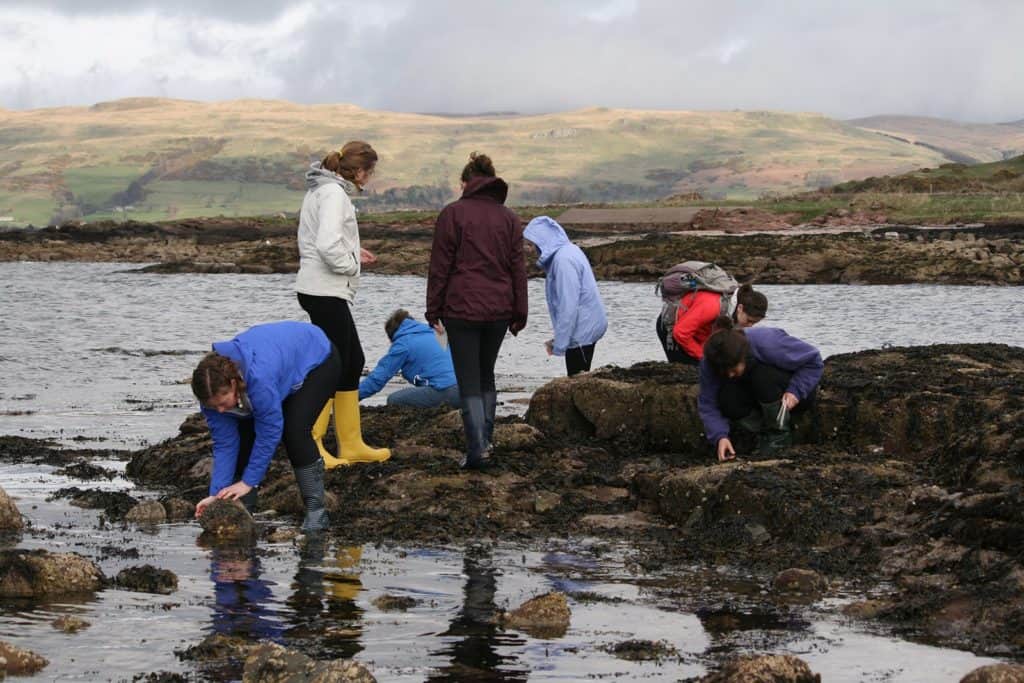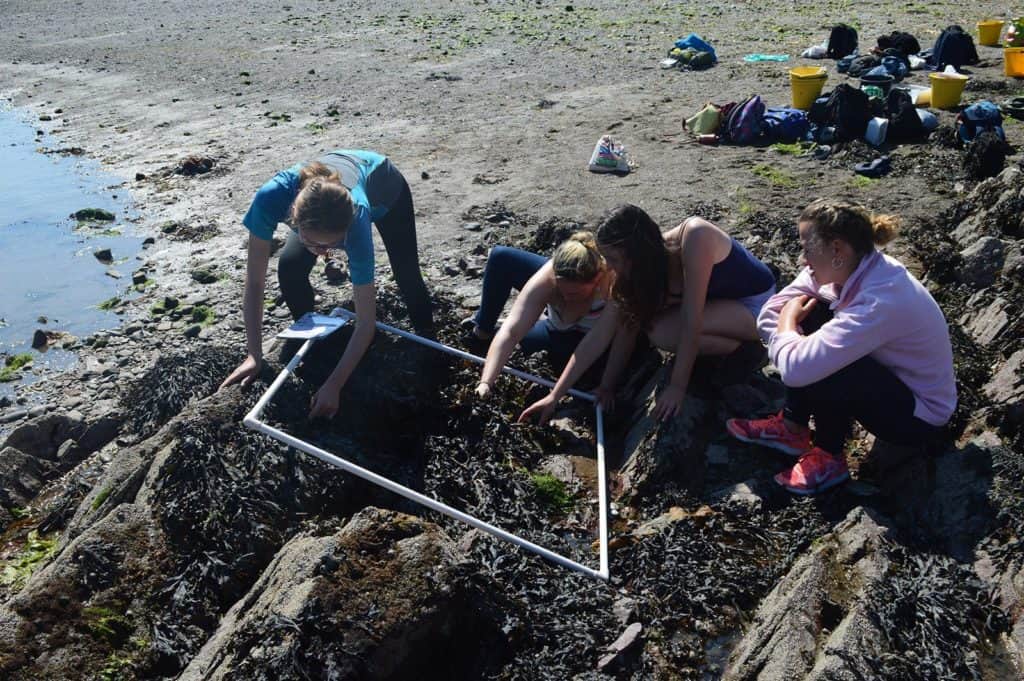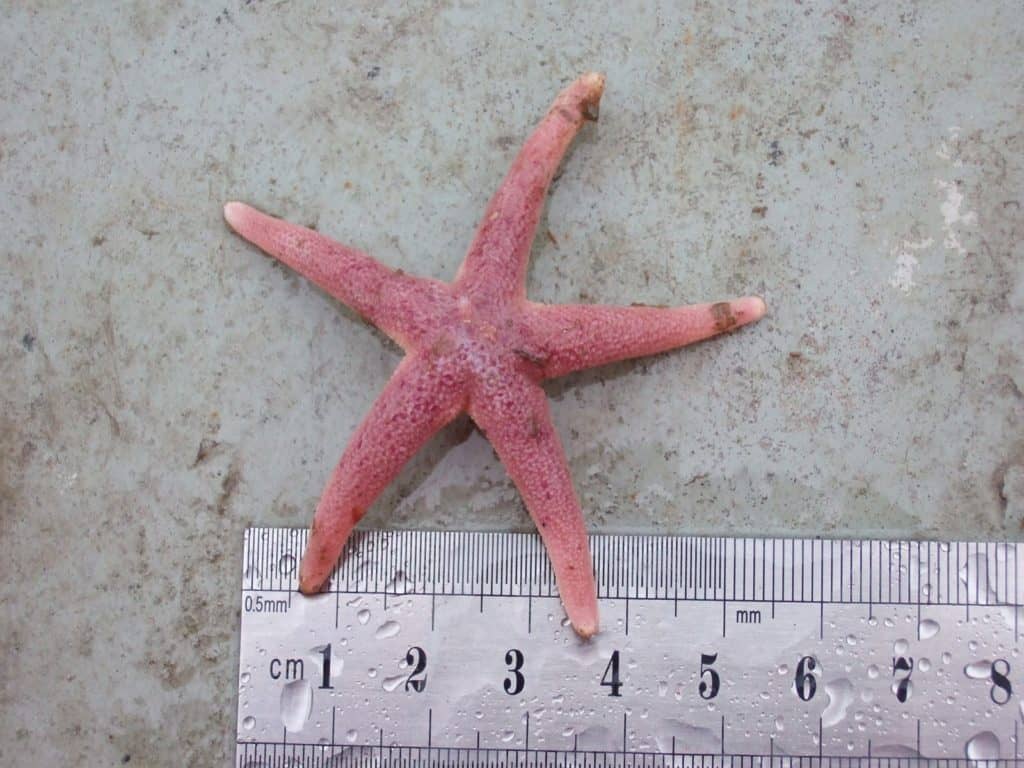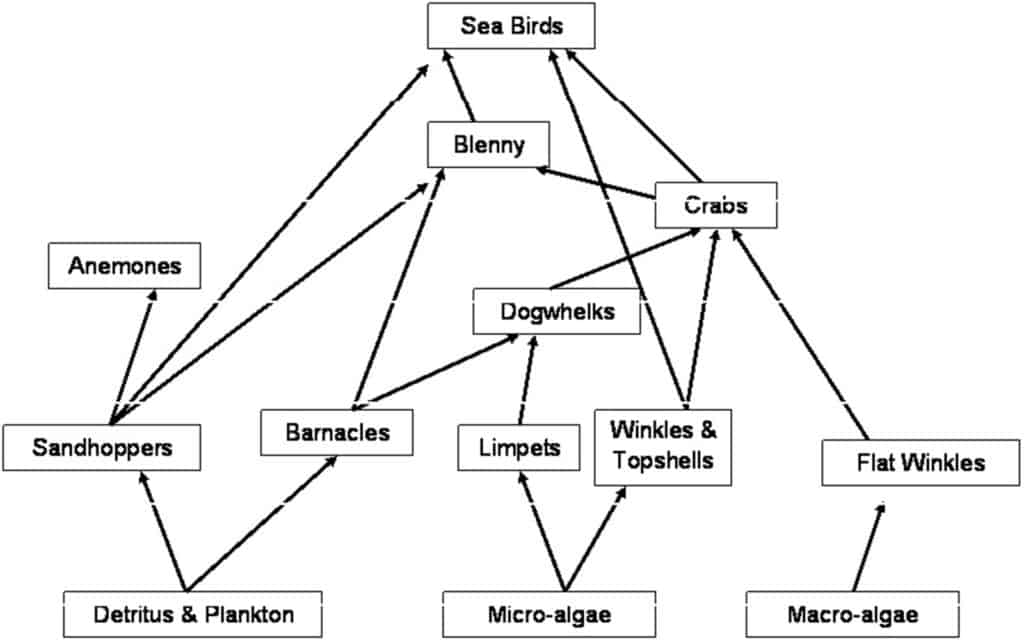What is ecological energetics?
Ecological energetics is the study of movement of energy and materials through ecosystems. Different organisms can be assigned to different trophic levels within ecosystems. This helps ecologists describe the transfer of biomass and therefore energy from one organism to another through food chains and webs (who eats who). Ultimately, this energy will be degraded and lost irretrievably from the system as heat.
The total energy in the universe hasn’t increased or decreased since the Big Bang, when the universe began. Over time, this energy is being dispersed over a larger area as the universe expands and cools. Energy cannot be created or destroyed.
What questions do biologists ask?
You can ask many scientific questions about the food chains, food webs, productivity and trophic pyramids in marine habitats. Here are some examples.

- What are the producers, primary consumers and secondary consumers here?
- Can you draw a food web for this shoreline?
- How would you use sampling to construct a pyramid of numbers for this shoreline?

- How could you measure the biomass of brown seaweeds here?
- Can you calculate the % energy transfer between producers and primary consumers?
- Why is energy lost between trophic levels?

- What is the biomass and energy content of the starfish population on this shore?
- Would your fieldwork measurements of the biomass and energy content of starfish be reliable?
- Why might the biomass of starfish on this shore have decreased in the last 30 years?
What questions could you investigate with fieldwork?
Here are some examples. Each research question has been split into 2 or 3 sub-questions.
| Research question | Sub questions |
|---|---|
| How does abundance at each trophic level relate in a rocky shore ecosystem? | What are the producers, primary consumers and secondary consumers at the rocky shore? How can you use sampling to construct a pyramid of numbers for this rocky shore? Why are there different numbers of indiviuals at each trophic level? |
| How and why does net primary productivity differ between sheltered shore X and exposed shore Y? | How can you measure NPP (GPP and R) in the two rocky shores? What are the abiotic differences between the two rocky shores? How might your results change over the year? |
| What percentage of the sun’s energy fixed by the producers get transferred to the secondary consumers at this rocky shore? | Can you use sampling to estimate the energy content at each trophic level? What is the % energy transfer at each trophic level? How is energy lost between trophic levels? |
Synoptic links
A good investigation will make links between different parts of the A-Level Biology specification. Here are some possible synoptic links for investigations into terrestrial habitats.
| Synoptic link | Detail |
|---|---|
| Adaptation | r and K strategies – many herbivores are r-selected while top consumers are more K-selected (but there are exceptions!) |
| Transpiration and gas exchange | Respiration as a major source of energy loss between trophic levels. |
| Photosynthesis | Limiting factors such as dissolved nitrogen and phosphorus, sunlight and dissolved oxygen. |
| Conservation | Removing or adding organisms at one trophic level may have a knock-on effect on other trophic levels |
Energy transfer in marine food webs
Primary production is the start of the food web; plants fix energy and carbon into the system through photosynthesis. The food that this generates will in turn be consumed by the herbivorous creatures like mayflies. This second layer of any food web could be described as the secondary production within the ecosystem. It is this group that may be eaten by the carnivores.
The rocky shore demonstrates a good range of communities all with populations of producers, herbivores and carnivores. There are also scavengers and detritivores, all organisms that help in the recycling of dead matter.
Producers
Primary producers are organisms that take in light energy or inorganic chemicals from external energy sources and synthesise them into organic compounds using photosynthesis or chemosynthesis. The primary source of energy for almost all ecosystems on Earth is the Sun. Producers are always the first trophic level.
Consumers
Consumers are organisms that ingest organic compounds to obtain energy. An organism that eats a primary producer is called a primary consumer. An organism that eats a primary consumer is called a secondary consumer. There is rarely enough energy or stored biomass available in an ecosystem for more than a quaternary consumer.
These relationships can be represented in a food chain or web. Not all energy is transferred from one trophic level to the next. The number of organisms, biomass and energy at each trophic level can be represented as a pyramid.
However, it is not quite as straightforward as, say, land habitats. For example, in a meadow grass (the producer) is eaten by rabbits (the herbivore) which in turn may be eaten by a fox (the carnivore). Superficially, it would appear a similar system on the shore with seaweeds as producers and grazing molluscs like periwinkles and topshells. Crabs and fish are the carnivores. There are very few animals on the shore that will feed directly on the visible seaweed (also known as macro-algae).
The sources of food and organic matter on rocky shores for animals to consume are:
- Macro-algae – seaweeds
- Micro-algae – including cyanobacteria (blue-green algae) and the young stages of macro-algae
- Lichens – like tar lichen
When seaweeds like bladderwrack reproduce they form spores that are dispersed in the seawater. These spores land in massive numbers on the shore and germinate quickly to develop a small thallus (a collection of undifferentiated cells). Initially just a small number of cells they later develop into the seaweed we recognise. It is this micro-algae that form the food for grazers like periwinkles, topshells and limpets. Also, within this microscopic mesh of cells other minute organisms and organic matter may become trapped and be consumed. This tiny material will not just be found on the rock. It will form on any substrate and so it is possible that grazers on large seaweeds are not actually eating it but the microscopic growths on the frond.
Detritivores
Detritivores or decomposers feed on dead or decaying organic matter to obtain energy. They form an important part of any food web as they release energy back into the ecosystem. The most common detritivore on shores is the barnacle.
Marine habitats
Ecological energetics can be investigated out at a number of different marine habitats including:
- Rocky shores: the area between high and low water with is predominantly formed of solid rock
- Sediment shores: the area between high and low water with is predominantly formed of sand or mud
Rocky shores
Primary productivity can be high on rocky shores. In turn this leads to high numbers of consumers and detritivores.

What factors affect primary productivity on rocky shores?
Dessication
Dessication means drying out. It occurs as a result of emersion at low tide. Dessication influences the upper and middle shore.The basic physiology of most marine organisms is very simple: the co ncentration of their internal fluids is the same as that of sea water. Water may pass freely in and out so that there is no requirement for water conservation. When exposed to the air, such organisms lose water by evaporation and may eventually die from dehydration. To survive on the shore they either have to avoid or tolerate water loss – and for animals breathing by means of gills this is a real problem. The further up the shore that they live the greater the period of emersion (time out of water) and the greater the problem of water loss
Light
Light intensity increases up the rocky shore. Light is needed for photosynthesis. Seaweeds need to be in seawater for this to occur. However, the water will filter off some of the wavelengths of light and reduce the intensity. Small algae, (e.g. some of the red algae), will photosynthesise with very little light and occur under other larger algae. Seaweeds in mid-lower shore require accessory pigments to absorb lower amounts of light penetrating the water. Little red light – the wavelengths most useful for photosynthesis – penetrates more than 5m into the sea
Temperature
The key change up the shore is the size of the diurnal temperature range. This means the difference between the lowest temperature and the highest temperature over a 24-hour period. The further up the shore that organisms live the greater the period of emersion and the greater the temperature fluctuation they must endure.
Immersion in water buffers against temperature change. Upper shore species will have to tolerate the greatest variation in temperature whilst it has least effect in the lower. High temperatures increase the effect of drying out. and increases salinity in pools.The temperature of British seawater varies little between day and night (perhaps 2°C in southern Britain), or between summer and winter (perhaps 10°C in southern Britain). Air temperatures on bare rock fluctuate much more wildly (40°C or more from – 12°C to +30°C ). On a summer’s day in 1991, a thermometer in bright sunlight, on the rocks for three hours between 12 noon and 3pm registered a maximum temperature of 52°C.
Wave action
The strong force produced by powerful wave action can dislodge living organisms and affect growth. Wave action is greatest where waves are breaking, so it tends to be most damaging at the middle of the shore, where waves break on both the rising tide and the fallling tide.
Salinity
Marine organisms, in osmotic balance with seawater, will absorb water by osmosis and swell up in fresh or brackish water. Elimination of such excess water may result in the associated loss of valuable ions from organisms unable to resorb such substances from their urine. By contrast they will lose water from their bodies if placed in more concentrated media. As the salinity of the environment changes so does the salinity of the organism’s body tissues.

Secondary and Further Education Courses
Set your students up for success with our secondary school trips and courses. Offering excellent first hand experiences for your students, all linked to the curriculum.
Group Leader and Teacher Training
Centre-based and digital courses for teachers
Experiences for Young People
Do you enjoy the natural world and being outdoors? Opportunities for Young People aged 16-25.
